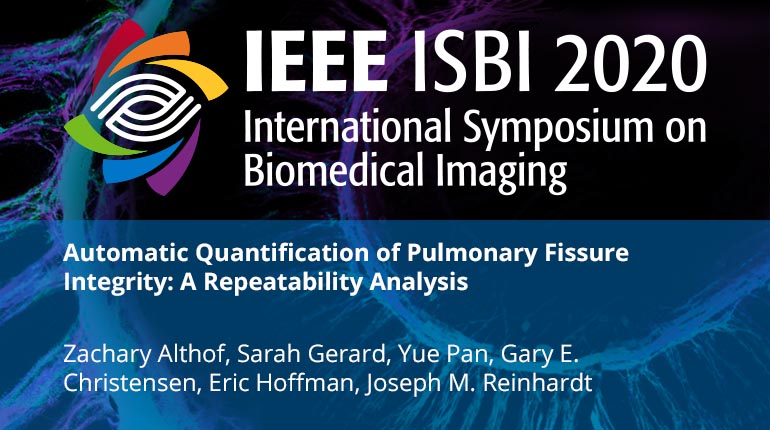
Already purchased this program?
Login to View
This video program is a part of the Premium package:
Automatic Quantification of Pulmonary Fissure Integrity: A Repeatability Analysis
- IEEE MemberUS $11.00
- Society MemberUS $0.00
- IEEE Student MemberUS $11.00
- Non-IEEE MemberUS $15.00
Automatic Quantification of Pulmonary Fissure Integrity: A Repeatability Analysis
The pulmonary fissures divide the lungs into lobes and canvary widely in shape, appearance, and completeness. Fis-sure completeness, or integrity, has been studied to assessrelationships with airway function measurements, chronicobstructive pulmonary disease (COPD) progression, and col-lateral ventilation between lobes. Fissure integrity measuredfrom computed tomography (CT) images is already usedas a non-invasive method to screen emphysema patients forendobronchial valve treatment, as the procedure is not ef-fective when collateral ventilation is present. We describea method for automatically computing fissure integrity fromlung CT images. Our method is tested using 60 subjectsfrom a COPD study. We examine the repeatability of fis-sure integrity measurements across inspiration and expirationimages, assess changes in fissure integrity over time using alongitudinal dataset, and explore fissure integrity?s relation-ship with COPD severity.
The pulmonary fissures divide the lungs into lobes and canvary widely in shape, appearance, and completeness. Fis-sure completeness, or integrity, has been studied to assessrelationships with airway function measurements, chronicobstructive pulmonary disease (COPD) progression, and col-lateral ventilation between lobes. Fissure integrity measuredfrom computed tomography (CT) images is already usedas a non-invasive method to screen emphysema patients forendobronchial valve treatment, as the procedure is not ef-fective when collateral ventilation is present. We describea method for automatically computing fissure integrity fromlung CT images. Our method is tested using 60 subjectsfrom a COPD study. We examine the repeatability of fis-sure integrity measurements across inspiration and expirationimages, assess changes in fissure integrity over time using alongitudinal dataset, and explore fissure integrity?s relation-ship with COPD severity.
 Cart
Cart Create Account
Create Account Sign In
Sign In





